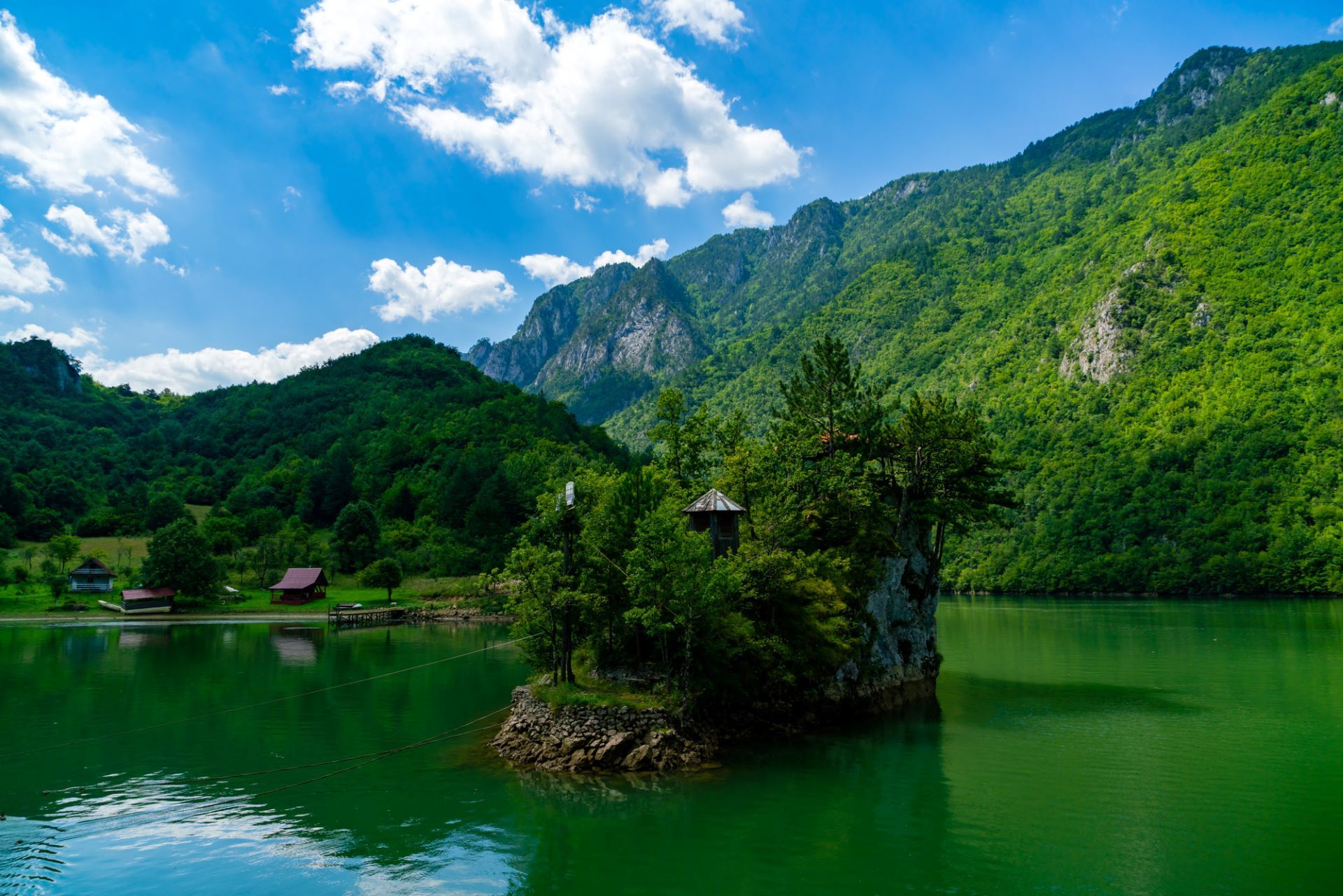National Park “Drina” is the youngest national park and the newest protected area in Republic of Srpska and Bosnia and Herzegovina, established in 2017. It spans an area of 6,315.32 hectares within the municipality of Srebrenica. The park stretches along the left bank of the Drina River, from the dam at Perucac to the borders of the Rogatica and Visegrad municipalities.
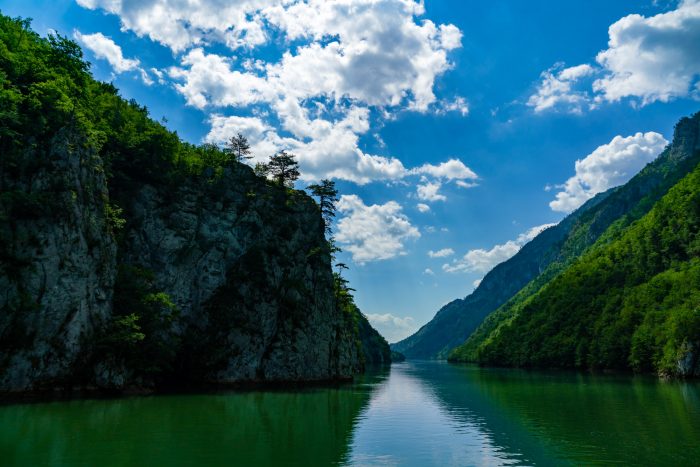
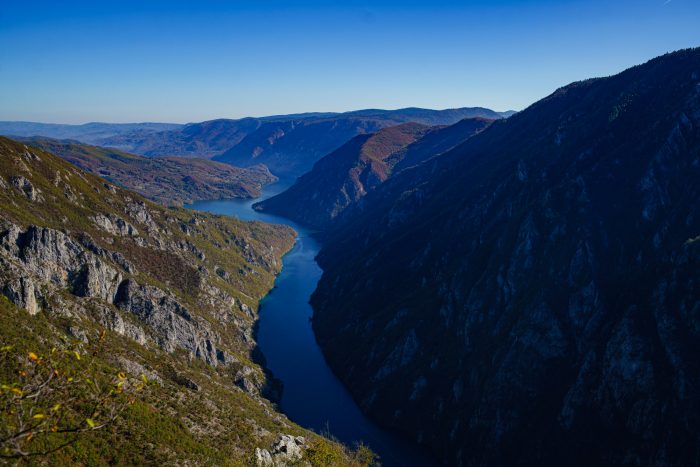
The core values of the National Park “Drina” lie in its habitats of endemic and relic plant species, particularly the Pancic Spruce (Picea omorika), as well as the rocky gorge and canyon landscapes of the Drina River and its tributaries. This region forms a unique complex within the Dinaric Starovlasko-Raska highlands.
The Pancic Spruce, endemic and a tertiary relic, was once widespread across Europe. Today, its range is limited to areas around the middle course of the Drina River. In Bosnia and Herzegovina, it can be found in the municipalities of Rogatica, Srebrenica, Foca, Cajnice and Visegrad.
Контакт: ТО Srebrenica
Интересантно
Area
Flora and Fauna
Events
Perucac Lake
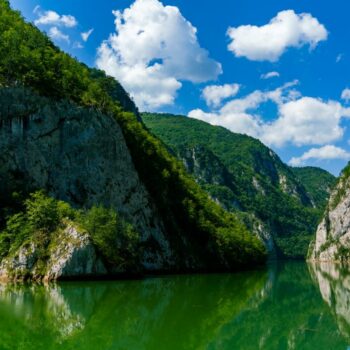
This lake is one of the most important hydro reservoirs in the region, located 30 kilometers southeast of Srebrenica. Its navigable length allows tourism activities, offering boat rides between Tara National Park in Serbia and the Susica Hunting Reserve in Republic of Srpska.
Old Town Klotjevac
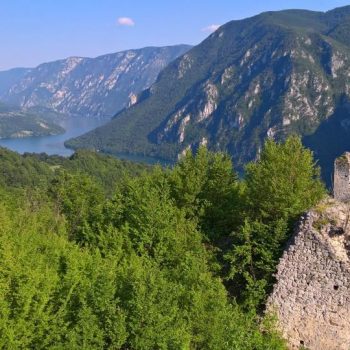
The medieval town and fortress of Klotjevac cover an area of 100 by 20 meters, built on a slope with preserved towers and walls, as well as ruins of structures such as stables. Located on the Jatara hill within the town’s area are about ten medieval Stecak tombstones.
Like many medieval Bosnian towns, Klotjevac was strategically positioned on an elevation for defense purposes. Its location provided an excellent view of this section of the Drina canyon. Just seven kilometers downstream lies another medieval fortress, the town of Djurdjevac, further emphasizing the historical importance of the area. Necropolises with Stecak tombstones in the vicinity, such as Zlatovo near Ljeskovik, Zaelisje, Urisici, Lubnicko Brdo and others, indicate continuous habitation in this region since ancient times.
Crni Potok Cabin
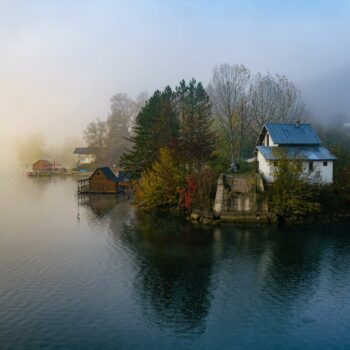 The Drina River canyon, with steep, vertical cliffs, features its deepest section at the confluence with Crni Potok, where the canyon depth reaches 976 meters. The gorge and canyon valley of Crni Potok is also remarkable, originating at over 1100 meters above sea level and descending more than 800 meters over a 6-kilometer course.
The Drina River canyon, with steep, vertical cliffs, features its deepest section at the confluence with Crni Potok, where the canyon depth reaches 976 meters. The gorge and canyon valley of Crni Potok is also remarkable, originating at over 1100 meters above sea level and descending more than 800 meters over a 6-kilometer course.
A cabin located in Crni Potok offers accommodation for visitors wishing to immerse themselves in this spectacular environment.
Old Town Djurdjevac

Among the cultural and historical landmarks in the park is the medieval town of Djurdjevac. Situated on a prominent ridge above the left bank of the Drina, its remains include a square tower and courtyard. The tower stands up to 3 meters high, and the outer wall extends about 25 meters. Historical records mention it originates from the year 1444, along with its surrounding settlement.


